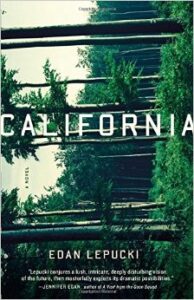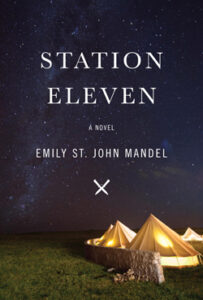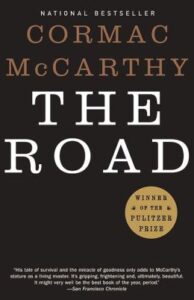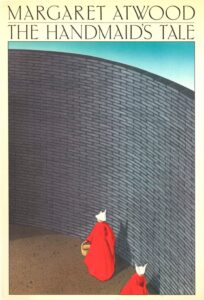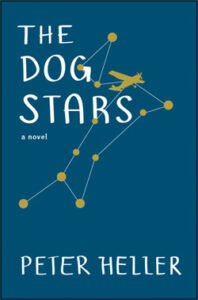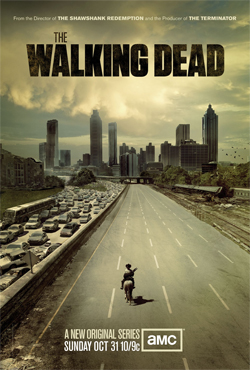Dystopian Fantasy has been a stand out genre these past few years. There’s the power-house teen trifecta of The Hunger Games, The Maze Runner, and Divergent series representing dystopian fantasy, but there also a spattering of other titles within Teen Fiction that is making Dystopias the genre of 2014.
But Dystopian literature was not born in Teen Fiction, and it is arguably in Adult Literature that the genre is truly able to realize the all-encompassing mass of horror and self-awareness it so embodies. Most dystopian plot lines revolve on a reflection on the human-condition and what humanity is capable of when placed in kill-or-be-killed scenarios, but there is also a segment of the genre geared towards isolation or family, and how humanity responds to or revolves around these things.
So without further ado, here are a few Dystopian Adult Fiction titles to introduce you to the genre!
California by Edan Lepucki
Set in the near-future with a crumbling society, California deals with Cal and Frida and how they handle the post-apocalyptic world. Though they choose at first to live alone and secluded with each other in the woods of California, their circumstances eventually change and cause them to leave the woods for what is left of civilization – but with the security offered by community also comes a brand new host of dangers beyond mere survival.
Station Eleven by Emily St. John Mandel
Station Eleven deals with the idea of what happens to art and culture after the end of society. The timeline vacillates between the present and the past, focusing mainly on the stories of five people who all have ties to the stage, all tied towards a theater troupe that eventually begins traveling around what remains of the United States. The story focuses on relationships as well as the human condition, and paints a bleak yet beautiful portrait of humanity and the world.
The Road (also adapted into a film) by Cormac McCarthy
Cormac McCarthy’s The Road is perhaps one of the bleakest portraits of a dystopian, post-apocalyptic world available. Adapted into a movie in 2009, The Road follows a father-son duo as they walk through America towards the coast in the hopes that something awaits them there. The Road is almost more a psychological study than anything else, admittedly dealing with the worst humanity has to offer when pushed to the limits. Regardless of the horrors the father and son face on the road to the coast, however, they also demonstrate a purely human condition throughout their travels: hope.
The Handmaid’s Tale by Margaret Atwood
The Handmaid’s Tale is set in the near future after a military dictatorship is formed from what used to be the United States of America. Beginning with a staged terrorist attack, a revolutionist movement quickly takes control and reorganizes society under a militaristic, Old Testament-inspired construct, which strips women of all rights among other things. The Handmaid’s Tale is presented from Offred’s perspective, a woman who is apart of a new caste in society, the handmaids, kept by the ruling class for reproductive purposes. The Handmaid’s Tale describes Offred before the coup as she tries to escape with her husband and daughter, but also details her life as a handmaid, intertwined as it is with the lives of the ruling class but also dramatically separate.
The Dog Stars by Peter Heller
Peter Heller’s third book revolves around the character of Hig, who has somehow survived the virus that has killed off nearly everyone he knows. Living with just his dog and cantankerous neighbor for company, Hig’s days are an aimless conglomeration of time and contemplating – until, that is, a transmission makes its way through the radio on his 1956 Cessna proclaiming that society still prevails. Risking every sense of peace and security he has found within the desolation of the new world, Hig attempts to find what is left of civilization – or die trying.
The Walking Dead (graphic novel and TV series) by Robert Kirkman
The Walking Dead follows a group of survivors living around a bombed out Atlanta, GA, during the zombie apocalypse. The graphic novels and the TV show do feature some pretty interesting zombies, yes, but the “walking dead” in the work’s title refers to the portion of humanity left living. The Walking Dead primarily features as a commentary on the remains of humanity, community, and how the human condition can stretch, bend, or break when put into no-hope scenarios. The graphic novel is an amazing piece of artwork, but if graphic novels are not your thing, the TV adaptation of is equally wonderful – and available at the library!
Next time you are at the library, give some of these titles a try! I swear that, though the teen section has a great offering of titles, dystopia is not just a teen genre, and you won’t be sorry for checking out what adult dystopian books have to offer.


